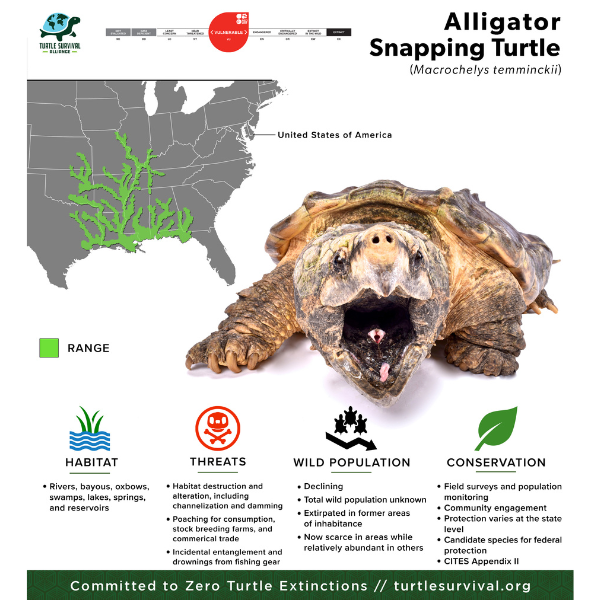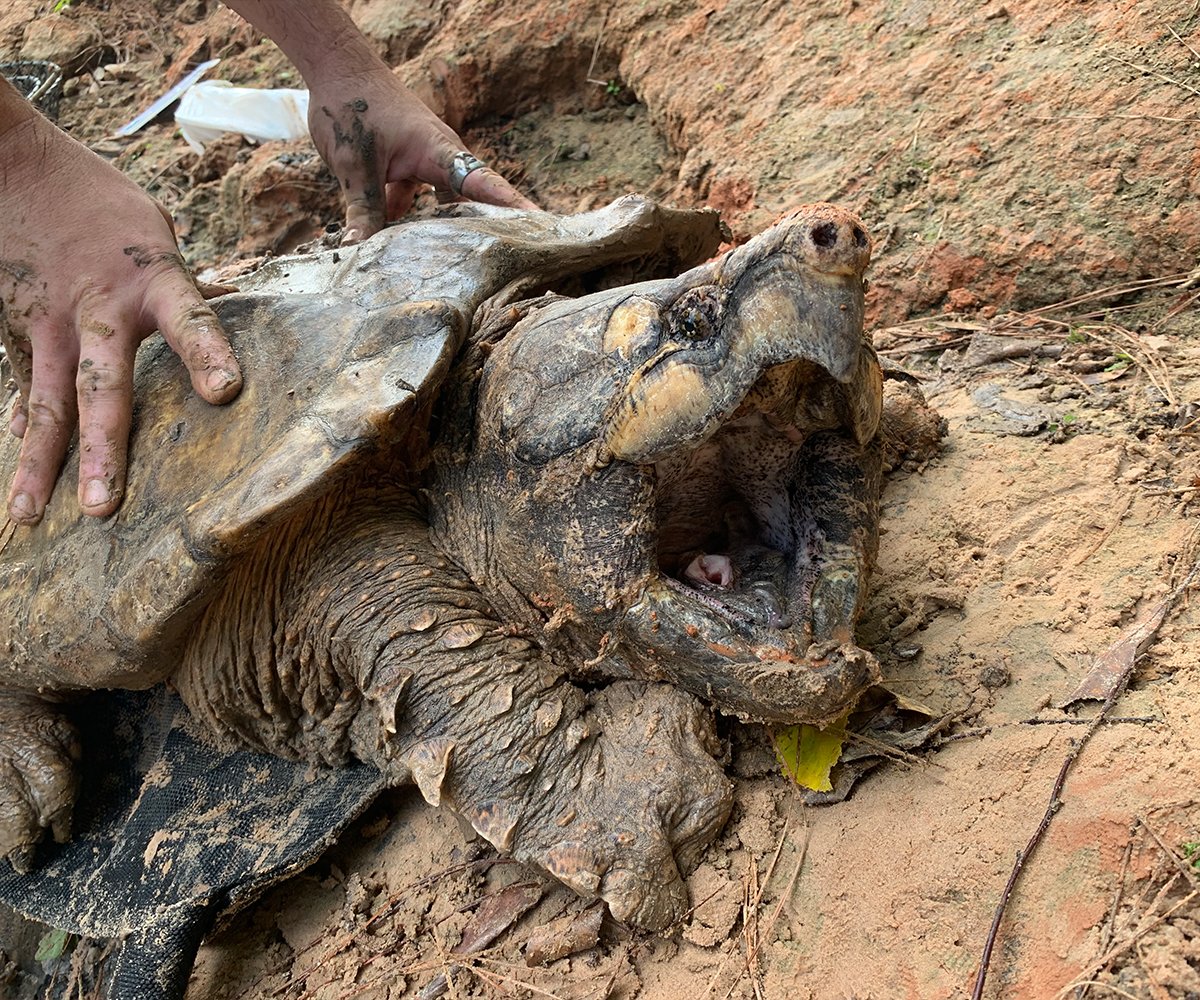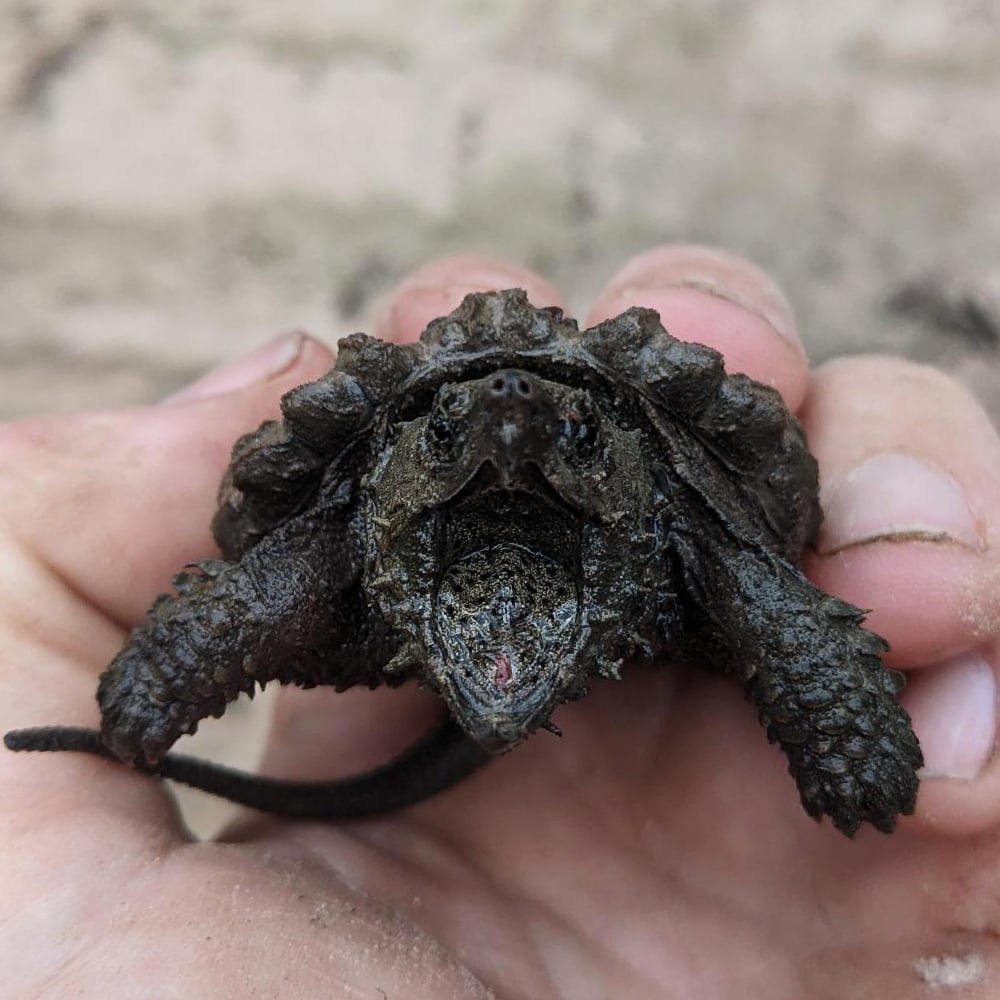Alligator Snapping Turtles are a benthic dweller of the waterbodies they inhabit, typically favoring the deepest part of the waterway. They are most active during the night when they may traverse through their home range actively feeding and scavenging. This species feeds on carrion, fish, reptiles (including other turtles), amphibians, arthropods, mollusks, annelids, mammals, and aquatic vegetation. During the day, this species is highly inactive, and may sit motionless on the bottom of the water column for hours at a time. However, they have evolved a unique adapation to still feed while relatively inactive. Equipped with a worm-like appendage in their mouths, this turtle will sit motionless in the water, moving the “lure” to attract prey such as fish, which it will bite down upon once inside the widely-opened jaws. A solitary species by nature, the Alligator Snapping Turtle has an average home range of just under 0.80 km, of which it typically uses a submerged object to define the core of its range (Riedle, et al., 2006). Individuals may however make considerable movements of several kilometers up and downstream from its home range. An obligate aquatic, this species rarely leaves the water except to lay eggs, or if displaced by flooding events. Females will migrate to nesting sites tens of meters away from the waterline to deposit up to 50 or more eggs. This species was heavily hunted for commercial and personal consumption in the past leading to localized and range-wide population declines. It is now protected from hunting in every state in which it resides, with the exception of Louisiana, where one individual may be collected per day for personal use.
Join us for Turtle Month!
Why Turtles?
Found around the world in rivers, deserts, jungles, and our own backyards, it’s easy to assume tortoises and freshwater turtles will always be here. But the very traits that once helped them survive render them vulnerable to extinction today.
Our Initiatives
Our Programs
Protecting the world’s most endangered tortoises and freshwater turtles
We All Play a Role.
To save turtles, we all play a role. Every day, tortoises and freshwater turtles around the globe face pressing threats. Your support equips us to support species where and how they need us most.
Turtles are ancient and remarkable creatures who deserve a champion. When you stand with us, you help ensure their continued survival. Together, we can create a world with zero turtle extinctions.


